Q: The range of Triantha and conservation
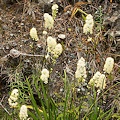 Triantha occidentalis
Triantha occidentalis
subsp. occidentalis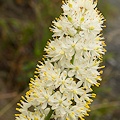 Triantha occidentalis
Triantha occidentalis
subsp. occidentalis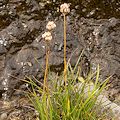 Triantha occidentalis
Triantha occidentalis
subsp. brevistyla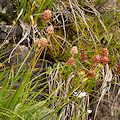 Triantha occidentalis
Triantha occidentalis
subsp. brevistyla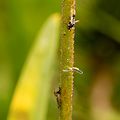 Triantha occidentalis
Triantha occidentalis
subsp. brevistyla
Triantha glutinosa (Michaux) Baker
Found only in Canada (all regions except Nunavut) and the USA (OR, ND, MN, WI, MI, IL, IN, OH, WV, VA, NT, NC, NV, VT, NH, ME, AK).
Triantha japonica (Miq.) Baker
Found only in Japan.
Triantha occidentalis (S.Watson) R.R.Gates
Found in Canada (Alberta and British Columbia) and northern USA (AK, WA, ID, MT, WY, OR, CA).
Triantha racemosa (Walter) Small
Found only in the USA, in two main range segments. The first segment is in the southeast (TX, LA, MS, AL, FL, GA), while the second is along the mid-Atlantic Coast (VA, DE, DC, MD).
To complicate the mix a little, Triantha occidentalis (which is the one shown to be carnivorous) has three subspecies. The subspecies and their ranges are:
Triantha occidentalis subsp. occidentalis: USA--OR and CA.
Triantha occidentalis subsp. brevistyla (C.L.Hitchc.) Packer: Canada--Alberta and British Columbia; USA--AK, ID, WA, OR.
Triantha occidentalis subsp. montana (C.L.Hitchc.) Packer: Canada--Alberta and British Columbia; USA--AK, ID, MT, WY. Keying out species and subspecies of Triantha is a little geeky....if I get many questions I may reproduce some information here, but I'll postpone that discusson for now.
In terms of conservation, these plants are not really at significant impending risk because they occur at a number of sites. However, it really doesn't need to be mentioned (although I will anyway) that most of the wetlands across the USA have been wiped out. Also, should I mention that the western states are being burnt to hell because of climate-change-exacerbated, explosive fires of an unprecedented kind?
So there is some uncertainty here.
I'm sure that the revelation that the genus contains at least one carnivore will result in poaching. That blows, but it's probably inevitable. Sigh. Humans.
Page citations: Lin, Q. et al. 2021; Rice, B.A. 2021.